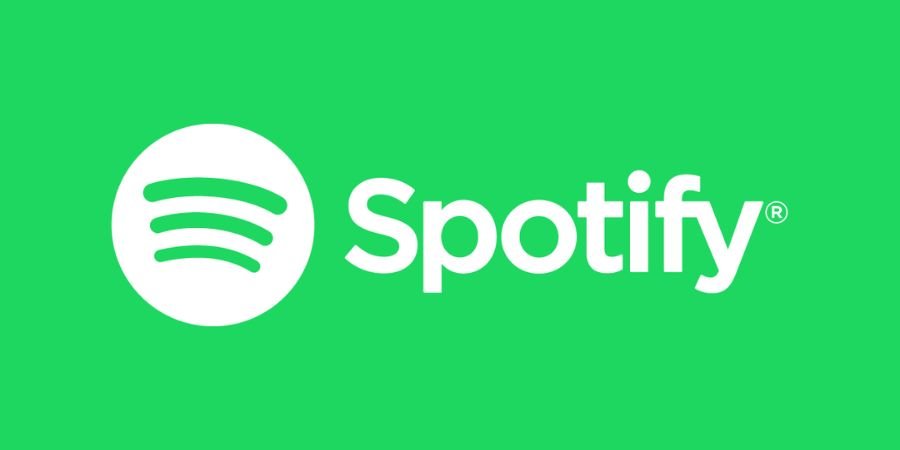The marketing industry is changing. What has previously been educated guesswork using societal demographics regarding psychographics, is changing to data accuracy and individualized approach. In 2025, 64% of participants are predicted to either agree or strongly agree that data-driven marketing are critical for the success of their organization.
Even with this overwhelming, positive belief, many organizations fail to fully utilize the mountains of data being captured. Data-driven marketing hacks are then becoming a position of strategy and execution, and organizations are seeing the effect on consumer engagement which can lead to revenue. Current statistics show that 88% of marketers are using analytics to inform marketing strategies and that 88% also strongly believe personalization/experiences increase sales.
The market and industry will grow rapidly, as by 2025 the worldwide digital marketing market is expected to reach $472.5 billion with a compound annual growth rate of 13.6%. This growth is attributed to numerous technologies such as artificial intelligence, machine learning, and predictive analysis which bring marketers an opportunity to make its way to true personalization, “getting closer to the user and creating a campaign based on preferences.”
Yet as this is occurring, there are also complications and challenges facing the industry, with the loss of third-party tracking cookies creating an overall complication in tracking consumer behavior, while first-party data becomes the primary reliance. Consumers are also increasingly becoming data unconscious and requesting transparency and control of what data is collected.
Even with these challenges, the opportunities are enormous. Marketers able to orchestrate a world of abundant data, utilize AI, and sustain their consumers’ trust will be in a position to compete. This article presents actionable, research-based marketing tips that offer different, yet easy-to-implement, data-driven marketing hacks beyond the foundations of traditional marketing.
This article explores actionable, research-backed marketing strategies that go beyond the basics, offering you innovative marketing hacks you haven’t tried to harness data for impactful marketing.
What is Data-Driven Marketing?
Data-driven marketing is nothing but a strategy in which the marketers’ decisions are mainly driven by data collected from different sources like customer behavior, preferences, and demographics. Marketers do not go by their instincts but rather study patterns and trends in data to identify the right customer segment, customize the communication, and get the most out of it.
To illustrate, a customer of an online retail store can be monitored as to which items are being viewed, and then he/she can be sent specific recommendations through email or via notifications in the app. In the same way, a user of a media streaming service can be offered a list of films or series similar to the ones he/she had watched earlier. The main thought is to turn data into insights that are not only usable but also that bring about better customer interaction, conversion, and overall marketing effectiveness. These actionable data-driven marketing tips are the cornerstone of modern campaigns.
Difference Between Data-Driven Marketing and Traditional Marketing
Traditional marketing mainly depends on general techniques and making broad assumptions about customer behavior. Marketers generally target customers according to their age, lifestyle, and main interest; they also consider things like it was done before, or, in the whole, annual turnover of the industry. Success is often measured in very simple and uninformative metrics like reach or impressions, with no exact knowledge of how customers react.
Data-driven marketing, on the contrary, totally relies on constantly updated and measurable data for every step of marketing. It brings about an opportunity for marketers to set customized offers for each client segment, target them accurately, and do continuous optimization of the process. Besides, the campaign can be quickly changed depending on the performance analysis, predictive modeling, and customer behavior.
Example: A classic store would probably send a catalog to every person living within that area. Whereas, a modern retailer would choose the most suitable offers for each customer based on their purchase history, engagement time, and likely interests, thus raising conversion rates. This is one of the proven marketing hacks for 2025.
Benefits of Data-Driven Marketing
- Better Targeting – Data indicates which audience segments are most relevant, thus marketing strategies will be allocated to those most likely to convert.
- Improved Personalization – Campaigns can be tailored to individual likes and dislikes, thus, a customer experience that is more interactive is created.
- Increased ROI – Data-based campaign optimizing leads to less money being wasted and higher customer conversion rates.
- Predictive Insights – Marketers using historical data are able to predict trends and customer behavior thereby, making a more effective and timely decision.
- Enhanced Customer Retention – Knowing customer behavior and preferences allows companies to quickly offer and interact with customers in ways that create their loyalty.
- Real-Time Optimization – Marketing professionals are able to change campaigns immediately according to performance metrics instead of waiting until the end of the campaign.
- Measurable Results – Each step is recorded, thus, it is easier to prove the campaigns’ effectiveness to the stakeholders.
Below are the Data-driven Marketing Hacks for Boosting Marketing
1. Harness the Power of First-Party Data
First-party data, which is the data that you acquire directly from your audience, is getting more and more important. This is due to the fact that during the upcoming times when privacy rules are going to be strict and third-party cookies are going to be gone for good, marketers will essentially have no other option but to count on first-party data. This is one of the unconventional data-driven marketing techniques that provides long-term value.
As an organization to extract the utmost from this first-party data, have your website and applications equipped with data-gathering capabilities. Think of setting up choice centers where users can indicate their preferences and also provide them with incentives to subscribe for quality. And also remember to regularly clean and refresh your data to maintain its relevance.
2. Implement Predictive Analytics for Smarter Forecasting
Predictive analytics, in the simplest terms, is the process of making predictions about the future by analyzing past data. Customer behavior is one area where it can be employed effectively as it gives hints about the pattern of the consumer and the needs that can be forecasted, thus letting you adjust your marketing strategies to be more suitable.
One such scenario is when a shop might check a customer’s online activity and his previous buying to guess the next item he is going to purchase. Retailers with that knowledge can not only sell their products in a more focused manner but also predict the volume of their sales and how much stock they will need, resulting in improved satisfaction and higher profits. This is one of the proven marketing hacks for 2025.
3. Utilize Marketing Mix Modeling with Causal Inference
Tradiotioanl Marketing Mix Modeling (MMM) usually has a hard time capturing the complicated, non-linear relations between marketing activities and results. The DeepCausalMMM framework solves this problem by combining deep learning with causal inference, thus allowing for more precise attribution of sales to data-driven marketing hacks.
By comprehending the interaction and influence of various channels on each other, one can make the best decision possible regarding the allocation of the marketing budget so that maximum contribution can be secured from each dollar spent to the set goals.
4. Leverage AI and Machine Learning for Personalization
AI (Artificial Intelligence) and ML (Machine Learning) are taking over marketing with their power of hyper-personalization. To this end, the new methods process big data getting rid of the useless part and perfecting the rest to create ad hoc content and give personalized recommendations.
One example is streaming services, which use AI for plotting user preferences through their watching history to suggest new series and films, while online shops that sell products using the Internet recommend items based upon past visits to their webpages. This is an Innovative Marketing Hack You Haven’t Tried.
5. Integrate Cross-Channel Data for a Unified View
The path of customers has extended beyond one or two contact points and now includes a variety of channels for interaction with brands, like websites, social media, emails, etc. Marketing strategies become more coherent and efficient with the data coming together from these different sources, as they leave no dark areas in understanding customer behavior.
Customer Data Platforms (CDPs) are one of the solutions that help to consolidate and analyze data from varied channels. Data from the combination of these aspects results in consistent communication and personalized encounters that directly lead to increased customer satisfaction and loyalty.
6. Optimize Campaigns with Real-Time Analytics
The analytics that are real-time give the marketers the power to oversee the performance of the campaign live and to make quick changes for the purpose of optimizing the results. The identification of the actions that are working and the ones that are not is made possible through the real-time tracking of the metrics such as click-through rates, conversion rates, and customer engagement.
Live feeds of data should be provided by the dashboards and alerts should be set up for the changes that are very significant in the key performance indicators. This proactive tactic leads to the constant effectiveness of the campaigns and their being very much in tune with the needs of the audience. Data-Driven Marketing Hacks are maximized this way.
7. Adopt a Test-and-Learn Approach
A/B testing and multivariate testing are two powerful techniques that reveal the factors that draw the audience. By modifying the various elements such as headlines, images, and calls to action, you will shortly discover the most successful combinations.
The marketing campaigns should always be experimenting with different elements and the insights gained from the experiments should be used to improve the techniques. This cycle of testing, learning, and enhancing not only keeps the central themes fresh but also fosters the practice of continual improvement and innovation.
8. Foster Data Literacy Across Teams
Data-driven marketing is an area that directly benefits from collaboration coming from various departments. If all the company players have even a slight understanding of data concepts and tools, it becomes possible to make better decisions and to create more effective strategies.
Hold data analysis and interpretation training sessions and aid the cross-functional teams in trading their insights and collaborating on data-driven projects. The combined approach will result in a larger volume of your marketing activities.
9. Prioritize Data Privacy and Compliance
The enormity of data collection is only one of the reasons why privacy and data protection concerns become more prominent. Among others, general regulations like GDPR and CCPA ensure your business’s legal safety and create trust in your audience simultaneously.
To have any hope of succeeding with respect to data collection, one has to adopt extremely rigorous methods of doing so, obtain unequivocal consent, and provide users with the means to manage their data according to their preferences. The demonstration of privacy concern and multiple legal protections for information in the company by any other business activities will be apt to achieve far more revenue, since trust and reliability will achieve much better customer relations and proper regard for confidential rights.
10. Continuously Evolve Your Data Strategy
The digital domain is constantly expanding, and so should your data strategy. Continue to evaluate and modify the data collection processes, tools, and analytics practices in order to keep pace with where the industry and technology are headed.
Find out what new technology and best practices there are in data-driven marketing. Participate in webinars, read industry reports, and speak with people to keep your practices relevant and useful.
Conclusion
A data-centric marketing approach has emerged as a must-do practice for successful companies in 2024 and the following years. Implementing these modern data-driven marketing hacks will not only elevate you to a level above basic analytics but also reveal insights that are richer and so, more fruitful, hence, leading to very significant results.
Keep in mind that the main point is not just the whole process of data collection but also the process of turning it into actionable data-Driven marketing tips that cover every aspect of your marketing strategies. As the situation unfolds, the skill of moving quickly and being informed will ensure that your data-driven marketing hacks are both strong and persuasive.








